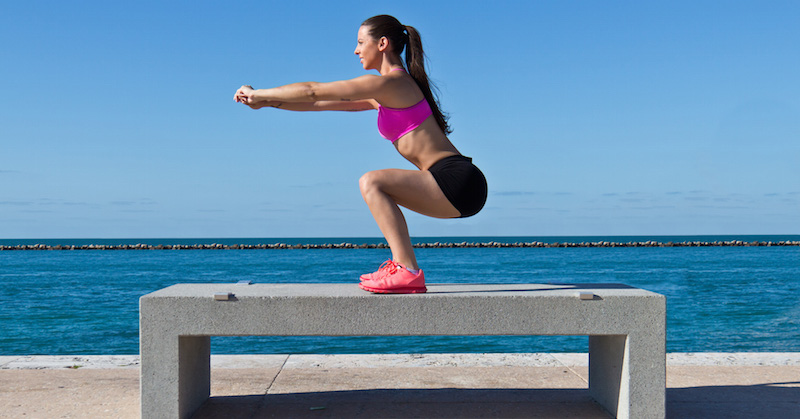Why You Ought To Add Squats To Your Workout
Last updated on
Exercise is a key player in disease prevention, and helps support optimal mental, emotional, and physical health, and longevity. However, as with most things, your exercise routine should be balanced and shouldn’t place too much emphasis on one activity such as cardio.
Always make sure that your routine incorporates a variety of exercises, such as strength training, high-intensity interval training, core training, and stretching.
The good news is, you don’t have to get a membership at the gym or hire a fitness trainer to get fit. Doing functional exercises, or movements that mimic human movement, will help support your overall fitness.
They can be done anywhere and without any exercise equipment. One phenomenal functional exercise that Dr. Mercola recommends doing is squats.
Squats Can Benefit Your Entire Body, Too!
Humans have been squatting since the hunter-gatherer days, and today, squats are known as some of the best functional exercises out there. Touted as “leg” exercises, squats are known to strengthen your quadriceps, hamstrings, and calves.
However, they actually offer benefits throughout your entire body, including deep within your core.
When you add squats to your exercise routine, they can help:
1. Build and strengthen muscles throughout your body
Squats can create an anabolic environment, which can promote body wide muscle-building. When done properly, they can effectively trigger the release of testosterone and human growth hormone in your body, which support muscle development in your entire body.
2. Help burn fat
One of the most effective and time-efficient ways to get rid of all those excess calories and fat is to gain more muscle. Dr. Mercola says, “For every pound of additional muscle you gain, your body will burn an additional 50-70 calories per day.” In other words, if you gain 10 pounds of muscle, expect to burn about 500 to 700 more calories per day than before.
3. Improve balance and mobility
Squats become more useful as you age as it helps increase leg strength, as well as train your core, stabilize and your muscles. Your balance then improves, along with the communication between your brain and your muscle groups. As a result, falls are prevented.
According to Dr. Mercola, performing squats is a simple way to prevent bone fractures, and is safer than taking mega-doses of calcium supplements and bone medications.
4. Prevent injuries
Many athletic injuries occur due to weak stabilizer muscles, ligaments, and connective tissues. Performing squats can strengthen all of these and prevent injury by improving your range of motion and flexibility.
5. Enhance your athletic performance
Studies have linked squatting with improved athletic ability. More specifically, doing squats helped athletes run faster and jump higher – which is why this exercise has become an important part of virtually every professional athlete’s fitness program, Dr. Mercola said.
6. Tone your backside, abdominal area, and the rest of your body
Squats are an excellent, multi-purpose activity for toning and tightening your behind, abs, and legs. Moreover, squatting helps build muscles that participate in the regulation of glucose, lipid metabolism, and insulin sensitivity. This, in turn, prevents chronic diseases, such as cardiovascular disease, diabetes, and obesity.
7. Assist with waste removal
Because squats can aid in the pumping of body fluids, it can also help in the elimination of waste and delivery of nutrition to all tissues, including your organs and glands. Squats also contribute to improved fecal movement through your colon and help induce more regular bowel movements.
When It Comes to Squats, Proper Form Is Key
Although doing squats will significantly improve your fitness regimen and help you achieve better results, some people refuse to do so, thinking that squatting can be destructive to your knees. However, research has confirmed that as long as you do squats properly, they can provide all the benefits mentioned above.
If you’re interested in making squats a regular part of your exercise program, take note of this step-by-step safe squat guide provided by Dr. Mercola:
- Warm up
- Stand with your feet just over shoulder width apart
- Keep your back in neutral position, and keep your knees centered over your feet
- Slowly bend your knees, hips, and ankles, lowering until you reach a 90-degree angle
- Return to starting position. Repeat 15 to 20 times, for 2 to 3 sets for beginners (do this 2 or 3 times a week)
- Breathe in as you lower. Breathe out as you return to starting position.
Some of the links I post on this site are affiliate links. If you go through them to make a purchase, I will earn a small commission (at no additional cost to you). However, note that I’m recommending these products because of their quality and that I have good experience using them, not because of the commission to be made.











 JOIN OVER
JOIN OVER
Comments